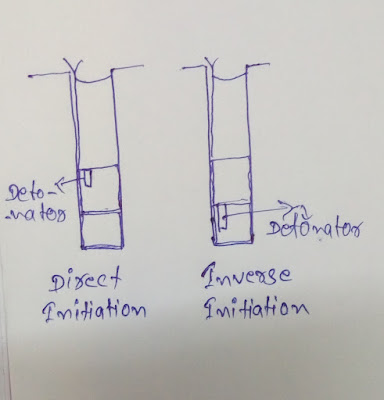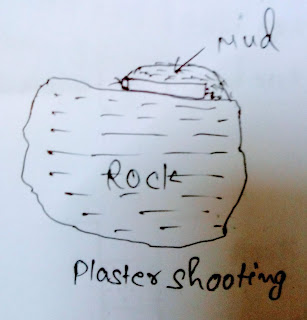Detection of Carbon Monoxide
As we know that carbon Monoxide is most dangerous gas. Largely found after the explosion.
So it is important to know the presence of CO...
In previously CO was mainly detected by the Munia bird or Mouse but now there are many detectors are present to know the CO percentage.
Working of Detector
The detectors are based on the chemical reaction of CO with certain types chemicals.The chemicals are kept in the detector tube which are sealed at both end and should be used before the expire of chemical.The seals are broken before the use. After breaking, the tube is inserted into aspirator which draws the mines air.
The change in colour of chemical confirms the presence of CO.
The colour is compared with the colour chart which shows the percentage of CO.
Types of CO detector
1.P.S. detector
In this detector the tube contains silica gel impregnated with light yellow potassium palladium sulphide and the presence of silica gel at the both ends which absorbs other gases due to this only CO passes to the tube.
The fixed volume of air is drawn to the tube with constant rate for 2 minutes.
The CO change the colour of potassium palladium sulphide from light yellow to brown.The colour changes from one end to other end which shows the concentration.
*Range of Detector:-0.005 to .0.12% of CO.
2. Holamite Tube
This is a another type of Detector. In which the Holamite is the composition of Iodine Pent oxide and Sulphuric Acid.
The colour of Malamute changes to shade of green, brown or black when reacted with CO from white. The percentage of CO can be defined by the use of colour chart.
3. Hopcalite Tube
This tube is works on heat generated by the oxidation of CO to Carbon Dioxide.The chemicals composition for this are mixture of manganese dioxide and copper oxide.
When the air enters the Hopcalite, the CO oxidised and the rise in temperature is recorded which shows the percentage of CO.
Range of CO detection:-0.005 to 0.015%.
The explanation of some other detector will be posted in the next post....
So it is important to know the presence of CO...
In previously CO was mainly detected by the Munia bird or Mouse but now there are many detectors are present to know the CO percentage.
Working of Detector
The detectors are based on the chemical reaction of CO with certain types chemicals.The chemicals are kept in the detector tube which are sealed at both end and should be used before the expire of chemical.The seals are broken before the use. After breaking, the tube is inserted into aspirator which draws the mines air.
The change in colour of chemical confirms the presence of CO.
The colour is compared with the colour chart which shows the percentage of CO.
Types of CO detector
1.P.S. detector
In this detector the tube contains silica gel impregnated with light yellow potassium palladium sulphide and the presence of silica gel at the both ends which absorbs other gases due to this only CO passes to the tube.
The fixed volume of air is drawn to the tube with constant rate for 2 minutes.
The CO change the colour of potassium palladium sulphide from light yellow to brown.The colour changes from one end to other end which shows the concentration.
*Range of Detector:-0.005 to .0.12% of CO.
2. Holamite Tube
This is a another type of Detector. In which the Holamite is the composition of Iodine Pent oxide and Sulphuric Acid.
The colour of Malamute changes to shade of green, brown or black when reacted with CO from white. The percentage of CO can be defined by the use of colour chart.
3. Hopcalite Tube
This tube is works on heat generated by the oxidation of CO to Carbon Dioxide.The chemicals composition for this are mixture of manganese dioxide and copper oxide.
When the air enters the Hopcalite, the CO oxidised and the rise in temperature is recorded which shows the percentage of CO.
Range of CO detection:-0.005 to 0.015%.
The explanation of some other detector will be posted in the next post....


